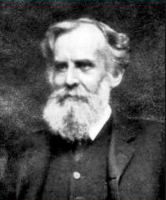










John Venn, (born August 4, 1834, Kingston upon Hull, England—died April 4, 1923, Cambridge), English logician and philosopher best known as the inventor of diagrams—known as Venn diagrams—for representing categorical propositions and testing the validity of categorical syllogisms. He also made important contributions to symbolic logic (also called mathematical logic), probability theory, and the philosophy of science.
Venn was the first child of Henry Venn, an Anglican clergyman, and Martha Sykes Venn. He was educated by tutors and in private schools before entering Gonville and Caius College at the University of Cambridge, where he graduated with a degree in mathematics and became a fellow in 1857. He was ordained an Anglican priest in 1859. Appointed lecturer at Gonville and Caius in 1862, he taught logic and the philosophy of science, later devoting himself to the history of the college and of his own family. He resigned from the clergy in 1883, having concluded that Anglicanism was incompatible with his philosophical beliefs. He served as college president from 1903 until his death.
The diagrams that bear his name were introduced by Venn as a means of depicting relations of inclusion and exclusion between classes, or sets. They consist of two or three intersecting circles, each representing a class and each labeled with an uppercase letter. Lowercase x’s and shading are used to indicate the existence and nonexistence, respectively, of some (at least one) member of a given class.
Two-circle Venn diagrams represent categorical propositions, the basic forms of which are: “All A are B,” “No A are B,” “Some A are B,” and “Some A are not B.” Three-circle diagrams (in which each circle intersects the other two) represent syllogisms, an ancient form of deductive argument consisting of two categorical premises and a categorical conclusion.
Fellow of the Royal Society